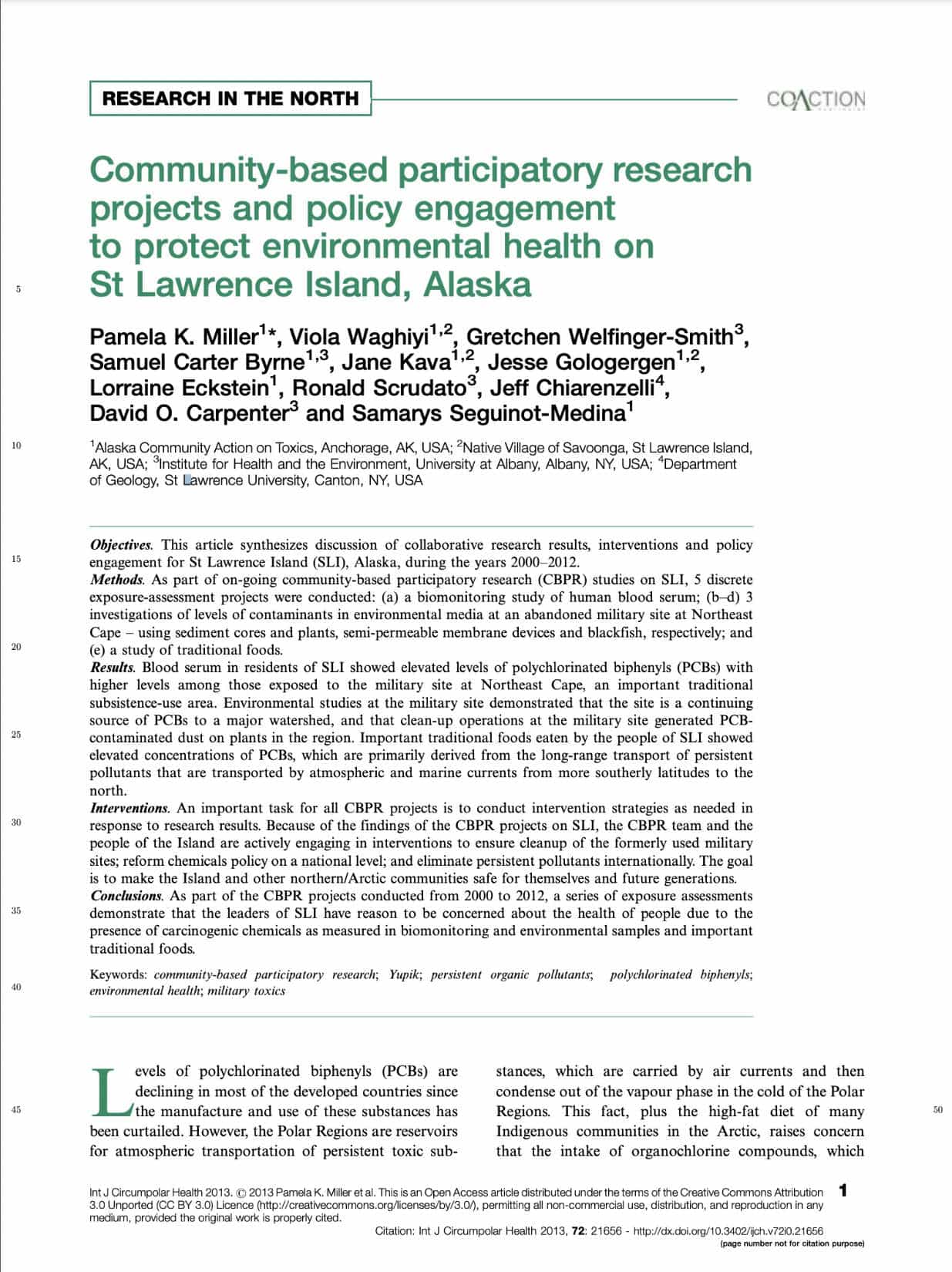Community-based participatory research projects and policy engagement to protect environmental health on St Lawrence Island, Alaska
About/Abstract
Objectives. This article synthesizes discussion of collaborative research results, interventions and policy engagement for St Lawrence Island (SLI), Alaska, during the years 2000–2012.
Methods. As part of on-going community-based participatory research (CBPR) studies on SLI, 5 discrete exposure-assessment projects were conducted: a biomonitoring study of human blood serum; investigations of levels of contaminants in environmental media at an abandoned military site at Northeast Cape using sediment cores and plants, semi-permeable membrane devices and blackfish, respectively; and a study of traditional foods.
Results. Blood serum in residents of SLI showed elevated levels of polychlorinated biphenyls (PCBs) with higher levels among those exposed to the military site at Northeast Cape, an important traditional subsistence-use area. Environmental studies at the military site demonstrated that the site is a continuing source of PCBs to a major watershed, and that clean-up operations at the military site generated PCB- 25 contaminated dust on plants in the region. Important traditional foods eaten by the people of SLI showed elevated concentrations of PCBs, which are primarily derived from the long-range transport of persistent pollutants that are transported by atmospheric and marine currents from more southerly latitudes to the north.
Interventions. An important task for all CBPR projects is to conduct intervention strategies as needed in response to research results. Because of the findings of the CBPR projects on SLI, the CBPR team and the people of the Island are actively engaging in interventions to ensure cleanup of the formerly used military sites; reform chemicals policy on a national level; and eliminate persistent pollutants internationally. The goal is to make the Island and other northern/Arctic communities safe for themselves and future generations.
Conclusions. As part of the CBPR projects conducted from 2000 to 2012, a series of exposure assessments demonstrate that the leaders of SLI have reason to be concerned about the health of people due to the presence of carcinogenic chemicals as measured in biomonitoring and environmental samples and important traditional foods
Keywords/Info
- community-based participatory research
- Yupik
- persistent organic pollutants
- polychlorinated biphenyls
- environmental health
- military toxics

